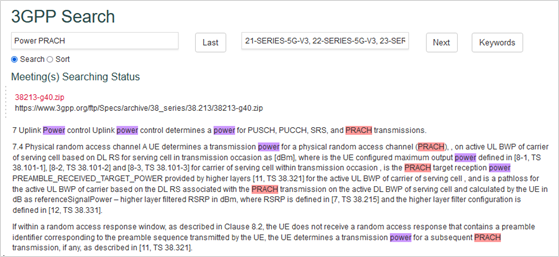With 5G into the picture, wireless communication has moved way beyond smartphones and telecoms. Today, the companies in sectors such as Healthcare, Automotive, Gaming, etc. are developing products/services compliant with the 5G standards. Thus leading to the importance of Standard Essential Patents (SEPs).
This gives the SEP holders (Companies with 5G SEPs) an upper hand. And to increase their profit in licensing agreements, these companies tend to throw in a pile of non-SEPs along with the true SEPs. More often than not, these patents are good for nothing. As a licensee, knowing the non-SEPs from a huge list of patents can help you save a lot of money during negotiations.
But analyzing hundreds and thousands of patents to confirm their essentiality with standards, sounds like a tedious job, eh?
Well, this is where GreyB’s expertise comes into the picture.
How do we do it?
Well, we were working on a case, and then another, and then… you know what, let’s just jump right into it.
*skips intro* … *skips recap*
EP1: Utilizing the knowledge base we built based on our past SEP-related studies
To be thorough in an analysis, it is very important to check all the relevant specs for concluding the essentiality of a patent family (as a single miss, can cost millions). Now, this task becomes very challenging as there are more than 1000 technical specs and reports, and finding the right ones may take a lot of time.
Therefore, we have built a repository of specs mapped against various technical concepts. This gives a head start to our analysts. For example – If the patent family relates to HARQ/CSI reporting, most of the related concepts are defined in TS 38.214 & TS 38.213. Other specs relevant to this concept are TS 38.331, TS 38.212, etc.
Having this knowledge base at an analyst’s disposal is a huge help. It helps them conclude the essentiality intelligently.
| HARQ / CSI Reporting | TS 38.214, TS 38.213, TS 38.331, TS 38.212, TS 38.211, TS 38.321 |
| Radio Resource Management | TS 38.213, TS 38.211, TS 38.214, TS 38.331, TS 38.212, TS 38.321 |
| Downlink Data & Control Signalling | TS 38.213, TS 38.212, TS 38.331, TS 38.211, TS 38.214 |
| Initial Access Procedures | TS 38.213, TS 38.321, TS 38.211, TS 38.331, TS 38.300 |
| Reference Signals | TS 38.211, TS 38.214, TS 38.331, TS 38.212, TS 38.213 |
| Dual Connectivity/Carrier Aggregation | TS 38.331, TS 37.340, TS 38.213, TS 38.321, TS 38.212 |
| Mobility Management & Handover | TS 38.331, TS 38.300, TS 38.304, TS 23.501, TS 23.502 |
| Power Control | TS 38.213, TS 38.321, TS 38.101, TS 38.214, TS 38.331 |
| Security | TS 33.501, TS 33.220, TS 33.401, TS 38.331, TS 23.501 |
| Channel Encoding | TS 38.212, TR 38.802, TR 38.912 |
EP 2: Search 5G Specs web at One Go
The next challenge that an analyst faces is finding the right sections to look for in the technical specs (these are generally 300+ pages long). But, thanks to our Standard Search Tool Grey Parrot that makes the job a whole lot easier. We have archived the latest versions of more than 800 5G specs. Grey Parrot helps us search effectively in all of them at one go using multiple keywords/proximity operators.
For example – If the patent family talks about Power control methods for the RACH channel. A quick search on the tool directly pops section 7 from TS 38.213.
EP 3: Leveraging the experience of different In-House Experts
As you know, the range of 5G standards is very wide i.e. they describe a varied range of concepts such as physical layer aspects, mobility management aspects, core network mechanisms, network security, service aspects, and many more. Now, from an analyst’s perspective, it is quite difficult to get a grasp on all these technologies.
Therefore, we have multiple analysts each having gained the experience of performing the essentiality checks for particular technology clusters (i.e. they know the ins & outs of relevant specs belonging to their technology cluster).
For example – we have an analyst who specifically worked a lot on confirming the essentiality of polar & LDPC coding-related patents. Thus, he/she is able to conclude the essentiality in less time as compared to any other analyst.
Here is a glimpse of the experience of the team working on SEP exercises.
| SEP Analysts | Total patents Analyzed | Key Technologies Worked on |
| Aman | 1360 | PDCCH/PBCH, PDSCH, Reference Signal, RRC Procedures |
| Sparsh | 1170 | Measurement Procedures, Polar Coding, LDPC Coding |
| Shivam | 1020 | Beam Management, Network Slicing, Dual Connectivity |
| Nripdeep | 986 | ACK/HARQ Reporting, MAC Procedures |
| Himanshu | 920 | Interference, Search Space, SRS, PT-RS |
| Ankush | 850 | D2D/V2X, RAN Architectures, IAB |
| Pratyush | 850 | Mobility, Registration, PDCP Procedures |
| Aadesh | 750 | Core Network Procedures (Bearer Management, Charging, Security) |
| Lovepreet | 615 | Power Control |
| Rishu | 522 | RACH, CSI |
| Sayanee | 520 | PUCCH, PUSCH, SRS, Dual Connectivity |
| Sayani | 510 | Carrier Aggregation, DRX, RACH |
| Aadarsh | 500 | Broadcasting, Network Services |
| Others | 2200 | – |
Concluding thoughts
Doing over declarations to strengthen their position as SEP holders in the market is a well-known strategy that companies follow i.e. (as a matter of fact – we found that only 1 out 4 declared is a True SEP). And generally, during licensing negotiation, they tend to throw a pile of patents to the other companies which include True SEPs as well as non-SEPs. The latter one should be filtered out as they are not worth paying for. This is where GreyB’s expertise comes into the picture.
GreyB can help you cut your licensing cost during negotiations. Our team has not only analyzed more than 10K patents but gained a lot of experience in evaluating SEPs from huge sets of patents in less time (cost-effective), with Quality.
Want us to evaluate true SEPs in your next licensing deal? Let’s have a chat!
Authored By: Aman Kumar and Muzammil Hassan, Infringement team.












